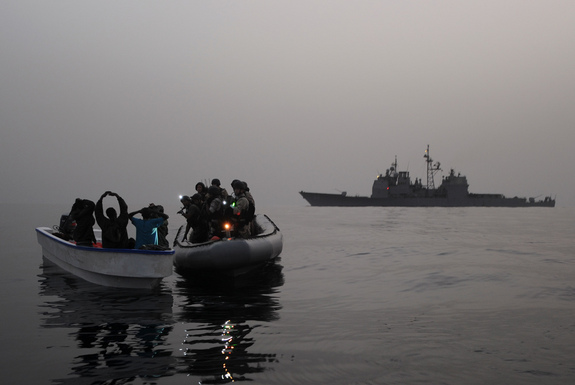Pirates Find Easy Prey with Merchant Ships

Sixteen minutes after armed pirates had boarded the Sirius Star, a Saudi-owned supertanker carrying oil, they had seized control of the ship and its 25 crew members in November 2008. The pirates anchored the Sirius Star off the Somali coast and demanded $25 million in ransom, and after two months, they received $3 million.
Pirate attacks present a major problem for the maritime shipping industry. While pirates may aim for vessels carrying a valuable cargo, such as oil, the strategy of taking hostages for ransom has become more prevalent, write researchers who analyzed attacks between 2002 and 2009, with the goal of finding patterns that might help the shipping industry address the problem.
"In general, merchant ships are not designed or equipped to fend off pirates' attacks and thus they are susceptible to pirate activities including boarding, hostage-taking, and stealing cargo," write researchers Mei Chi Wong and Tsz Leung Yip of The Hong Kong Polytechnic University, in Kowloon.
Cases like the Sirius Star have become numerous enough to raise public concern, they note in a forthcoming issue of the International Journal of Shipping and Transport Logistics.
In their analysis, the researchers looked at a number of factors associated with piracy, including the types of vessels, the location, the national flag being flown by the targeted ship, the result, the weapons used and the level of violence.
The team grouped the pirate attacks according to violence. Low-violence attacks tend to be perpetrated by pirates who are not well organized or trained, the analysis showed. They attack ships that are anchored or berthed, typically using simple weapons, like knives, to rob the crew and the ship, before departing quickly.
In medium-level attacks, more organized pirates threaten, assault, injure and take crew hostage. The most violent attacks target the crew as well as the ship and cargo, resulting in demands for ransom, killings and the disappearance of crew. The perpetrating pirates are organized and well-armed, carrying automatic weapons. African pirates in particular have adopted this approach, the researchers write. [10 Weapons That Revolutionized Combat]
Get the world’s most fascinating discoveries delivered straight to your inbox.
Attacks with medium or high levels of violence may be more difficult for crews and ships to fend off; measures currently used by ships have been effective only at addressing low-violence attacks. More international cooperation is needed to address the more violent attacks, they write.
The merchant ships are not the only victims of pirates. In 2011, scientists reported that the high rate of attacks off the Somali coast had disrupted the path of ships collecting weather data for the area, creating a hole in observations used to better understand climate change.
Follow Wynne Parry on Twitter @Wynne_ParryorLiveScience @livescience. We're also on Facebook & Google+.
 Live Science Plus
Live Science Plus






